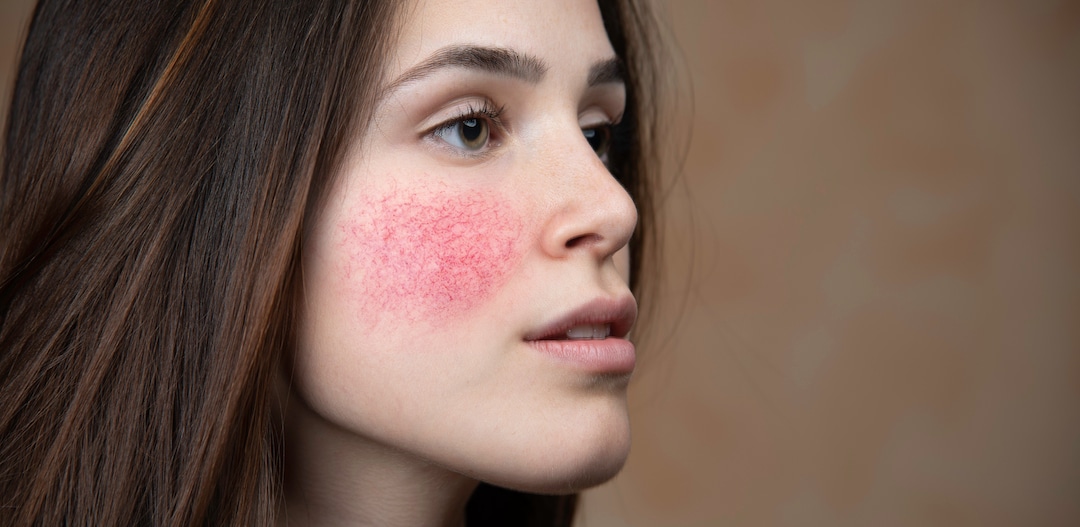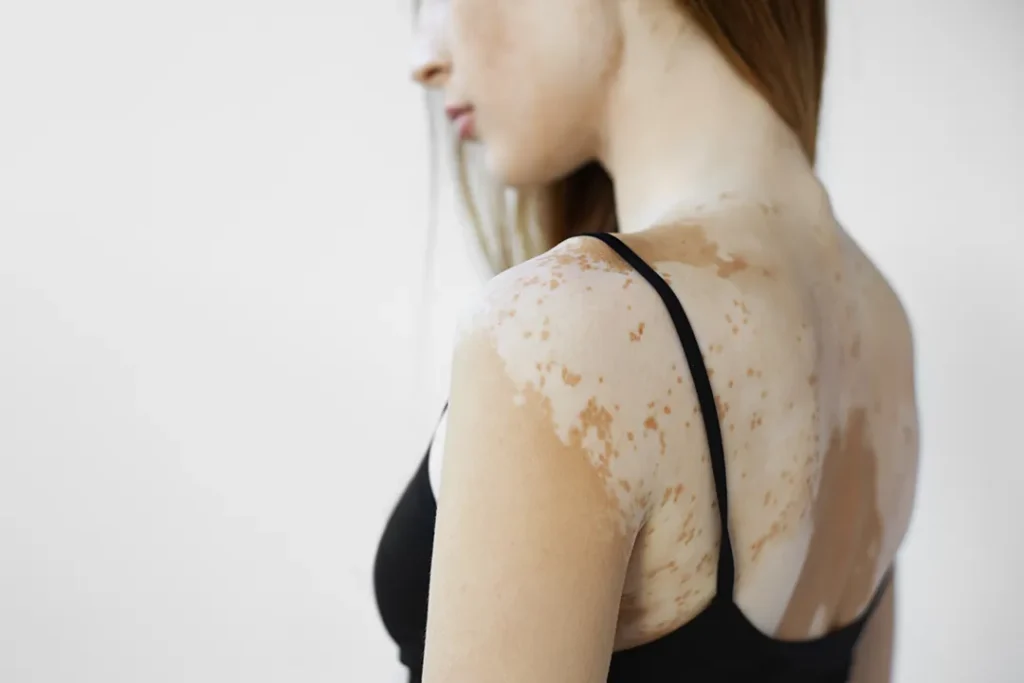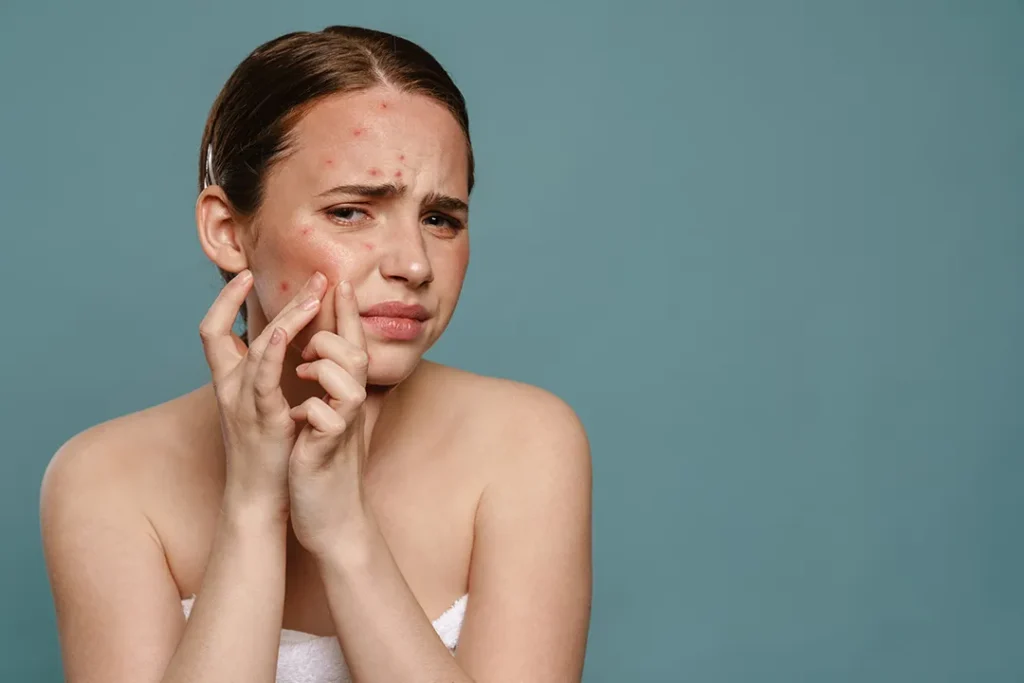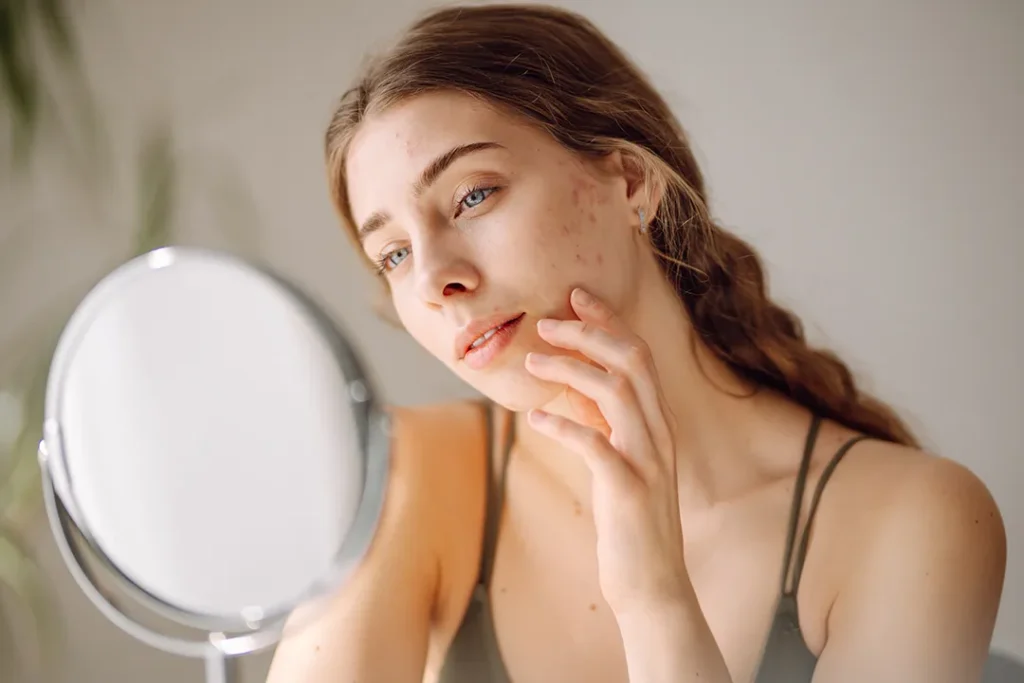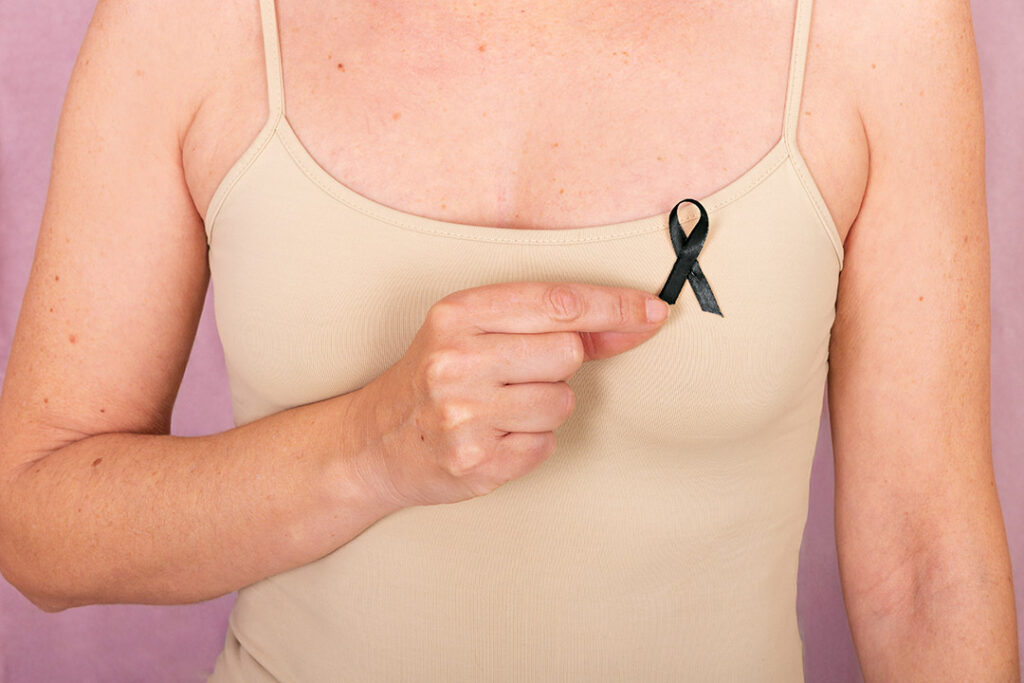Who Gets Rosacea?
Millions of people, more than 400 million to be exact, suffer from the symptoms of rosacea. It can develop at any time in a person’s life, though it’s most likely to affect middle-aged people from 30 to 50. Women are slightly more likely to develop this inflammatory skin condition, with some scientists speculating that menopause may be a trigger.
Others at higher risk for rosacea include:
- People of Northern European descent
- People with a family history of rosacea
- People who have moderate to severe acne
- People who are prone to blushing
What Kind of Facial Redness Does Rosacea Cause?
There are different types of rosacea, each identified by a unique set of symptoms:
- Redness in the central part of the face
- Swollen blood vessels on the nose and cheeks
- Red, acne-like pimples, sometimes containing puss
- Flushed skin that feels hot
- Swollen eyelids
- Dry, irritated eyes
- Thickening of skin on the nose
“The symptoms of rosacea can easily be mistaken for problems due to other causes,” says Dr Austin. “When symptoms persist or increase, it’s important to consult a skin care professional.”
What Causes Facial Redness Besides Rosacea?
In addition to skin conditions such as acne and rosacea, facial redness can be the result of:
- Over-exfoliating
- Irritating skin care products
- Insufficient sun protection
- Exercise
- Alcohol
- Food allergies, including chocolate (sorry!)
Help for Rosacea & Facial Redness, Too
The cause of rosacea remains a mystery, but beauty experts and scientists are solving ways to address its symptoms. In the process, they are learning how to treat facial redness in general. “Maintaining the health of the skin barrier is one vital aspect of controlling facial redness,” says Dr Austin. The skin barrier is literally your body’s first line of defence against environmental threats. At the same time, it regulates your skin’s water balance to ward off inflammation, dryness, and itching. “A daily skin care program with products formulated to promote skin health can help keep redness to a minimum,” reports Dr Austin.
Niacinamide (vitamin b3) helps to improve the barrier of the skin while providing anti-inflammatory and anti-bacterial support. This takes products like Aspect Dr Multi B Plus and Solarcare to the top of any Rosacea sufferer’s wishlist.
“Used daily and in conjunction with in-clinic treatments, the right skin care can help reduce facial redness and improve skin health and beauty,” says Dr Austin.
Aspect Dr Redless is another favourite and is specifically designed to help calm and soothe redness and inflammation with gentle, skin-loving ingredients such as Seabuckthorn oil and Kakadu Plum.
If red flushed skin is making you uncomfortable or you think you may be suffering from rosacea, it’s time to act. Contact the medical experts at Austin Clinic for a friendly, informative consultation and a discussion of how medical grade skin care can help you with your problem.
